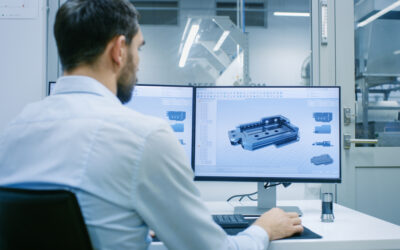As engineering professionals strive to improve efficiency and accuracy in product development, Digital Twins have emerged in the mechanical engineering community. This transformative technology paves the way for sophisticated simulation, testing, and optimization, which can substantially reduce costs and lead times. This article delves into what Digital Twins are, their benefits, and how engineers can effectively implement them in their product development cycles.
What are Digital Twins?
Digital Twins, in essence, are virtual replicas of physical systems. They integrate real-time data with a dynamic simulation model, allowing engineers to predict and analyze the behavior of the physical system under different conditions. For mechanical engineers, this means creating highly accurate virtual models of machinery, components, or even entire production lines.
Application in Mechanical Engineering:
- Design Optimization: Through Digital Twins, mechanical engineers can iteratively refine designs. By subjecting the virtual model to various loads and conditions, engineers can foresee potential issues and optimize design elements for performance, durability, and efficiency.
- Predictive Maintenance: Digital Twins allow for real-time equipment monitoring, which helps predict maintenance requirements. This leads to minimizing unexpected downtimes and prolonging the equipment’s operational life.
- Process Simulation: In manufacturing, Digital Twins can simulate production processes. Engineers can optimize manufacturing methods, identify bottlenecks, and find solutions to reduce waste and increase productivity.
- Training and Safety: Digital Twins can create realistic training environments. This is particularly useful for training operators in handling complex machinery, ensuring they are well-prepared for real-life scenarios without risking damage to equipment or personnel.
Benefits for Engineering Professionals:
- Cost Reduction: By identifying and rectifying potential issues early in the design phase, engineers can save substantial materials and labor. Predictive maintenance also leads to lower repair costs and extends asset life.
- Faster Time to Market: Utilizing Digital Twins for rapid prototyping and simulation significantly reduces development time. This enables faster validation and faster time-to-market for new products.
- Enhanced Product Quality: Digital Twins help understand how products perform under various conditions. This knowledge can be used to make informed design choices, resulting in superior product quality.
- Data-driven Decision Making: Digital Twins generate a wealth of data that can be used to make informed decisions. This data-driven approach leads to better engineering solutions and can provide a competitive edge.
Implementing Digital Twins:
- Integration with Existing Systems: For seamless implementation, the Digital Twin technology must be compatible with the existing CAD, CAM, and other systems used in the product development.
- Data Security and Privacy: With the enormous amounts of data exchanged, engineers must ensure the security and privacy of the information. This involves robust encryption and adherence to data protection regulations.
- Skill Development: As Digital Twins are relatively new, engineering professionals need training and development to effectively utilize this technology.
- Scaling and Customization: Digital Twins should be scalable to cater to varying project sizes and customizable to meet the specific requirements of different mechanical engineering applications.
A Paradigm Shift
Digital Twins represent a paradigm shift in mechanical engineering. By adopting this technology, engineering professionals can enhance the efficiency and accuracy of product development and cultivate innovation. However, successful implementation requires a keen understanding of the technology and its integration within the existing engineering framework. Through continuous learning and adaptation, mechanical engineers can harness the full potential of Digital Twins to revolutionize product development.




